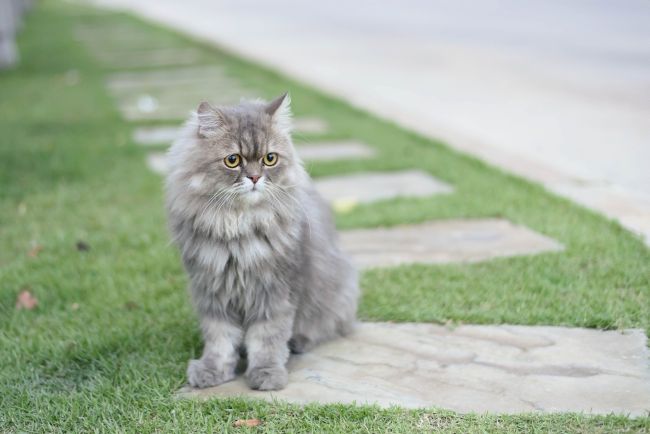
When one thinks of a pampered kitty, usually it is the glorious Persian cat that comes to mind. The bourgeois feline has been a favored pet in royal halls and humble homes for centuries. One of the oldest cat breeds originally known as “Asiatic cats,” the breed now known as the Persian was designed to create the most docile, mild-mannered long-haired cat. Glance at the list of facts below to find out why Persian cats have won the hearts of so many.
Facts About Persian Cats
- Persians first came on the scene in 1871 when they were officially recognized by the Cat Fancier’s Association. However, this breed is believed to have existed in Europe since the 17th century, when an Italian named Pietro Della Valle brought the first long-haired breeds to Europe from Persia.
- Persians have held the title of the most popular cat breed (as ranked by the Cat Fancier’s Association) for more than 30 years.
(*Note: While this may be true, this breed is not considered a good match for children, since the noise, tugging, playing and prying little hands tend to annoy these cats. Older or especially considerate children may do well with Persians, but this breed is persnickety and will make his disapproval known if he thinks the children have crossed a line.)
- One of the reasons that Persians are often considered pampered cats, is due to their high maintenance coats. The multi-layered dense hair requires daily brushing and regular grooming in order for the cat to stay presentable. Even though Persians do demand plenty of TLC from the groomers, this evidently has not be a deterrent to cat owners, as they remain an uncontested popular breed.
- Persians are often characterized by white fur, but the breed actually comes in a plethora of coat shades. Ranging from silver, black, smoke and red, Persian cats have a surprising range of nearly 80 coat color variations.
- Queen Victoria, the longest-reigning monarch of Great Britain, was devoted to her two blue-colored Persians. This royal trend caused the breed’s popularity to rise in England under the queen’s rule.
- The long-coated Persian is also a decidedly lazy kind of cat. Unlike the active Abyssinian or curious Sphynx, Persians are a sedentary breed, lounging for hours and hours on end. Described as “furniture-like” these sleep-loving kitties are the feline equivalent of the lap dog! (This might be due to the fact that wearing a heavy fur coat would make anyone want to stay snuggled up and take plenty of naps, while the Sphynx cat might stay on the move simply to keep his hairless body warm!)
- Persians are not good mousers, since they are primarily interested in affection and snoozing. The upside of this drawback is that they are less inclined to hunt, scratch or chase anything around the house. Your curtains, couches and personal effects are not likely to be destroyed or marred in any way by this kitty.
- Like the Siamese cat, Persian cats are classified in two categories: show and traditional. Persians who are deemed show-worthy have tiny ears, wide eyes and distinctly flatter noses than the traditional cats. Show Persians also have wider and shorter tails than traditional Persian cats.

